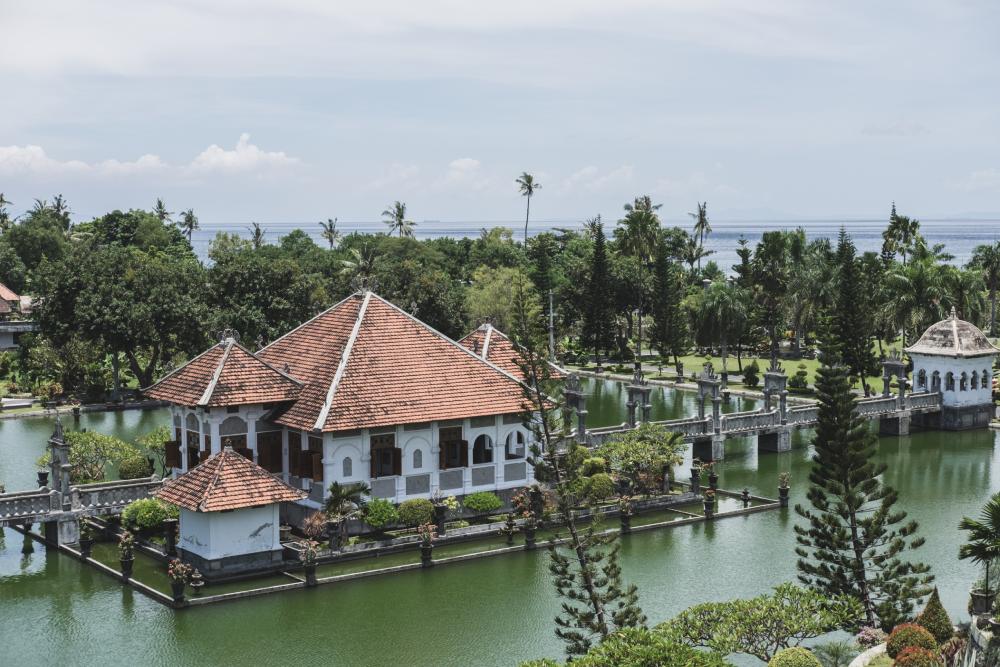
Traversing the picturesque roads to the coastal outskirts of east Bali is an adventure in and of itself, where one’s journey is accompanied by verdant rolling hills on one side and ocean panoramas on the other. Most popular for its outdoor offerings, the east also hosts some historical highlights worth visiting, including the elaborate ‘estates’ inherited from kingdoms of the past: beautiful water palaces of Karangasem that offer a window into the final days of ancient royalty.
For almost a millennium Bali was governed by a single ruler, from the Bedulu (or Bedahulu) Kingdom of the ‘Ancient Bali’ period through to the Gelgel Kingdom under the rule of the legendary Dalem Waturenggong. It wasn’t until the late 17th century that this all changed. The Gelgel Kingdom fell into disarray and the rule over Bali was split into nine separate kingdoms: Klungkung, Buleleng, Karangasem, Mengwi, Badung, Tabanan, Gianyar, Bangli and Jembrana. Over the centuries, these kingdoms fought and vied for power, building their own palaces, dynasties, societies and governments.
Kings and kingdoms, at least in their traditional forms, came to an abrupt halt when the final Dutch invasion of 1908 secured their colonial rule over the island, seizing ultimate suzerainty from the Kingdom of Klungkung – who had been considered the primus inter pares (first among equals) due to their historic ties with the Gelgel Kingdom, and thus became the symbolic downfall of Balinese ‘kingdomship’. Whilst many of these noble families today remain highly respected and endowed with past legacies, inheritances and indeed, responsibilities, the majesty of these previous kingdoms is now best witnessed through their palaces, and also their elaborate ceremonies.
Taman Ujung Water Palace – The Garden at the End
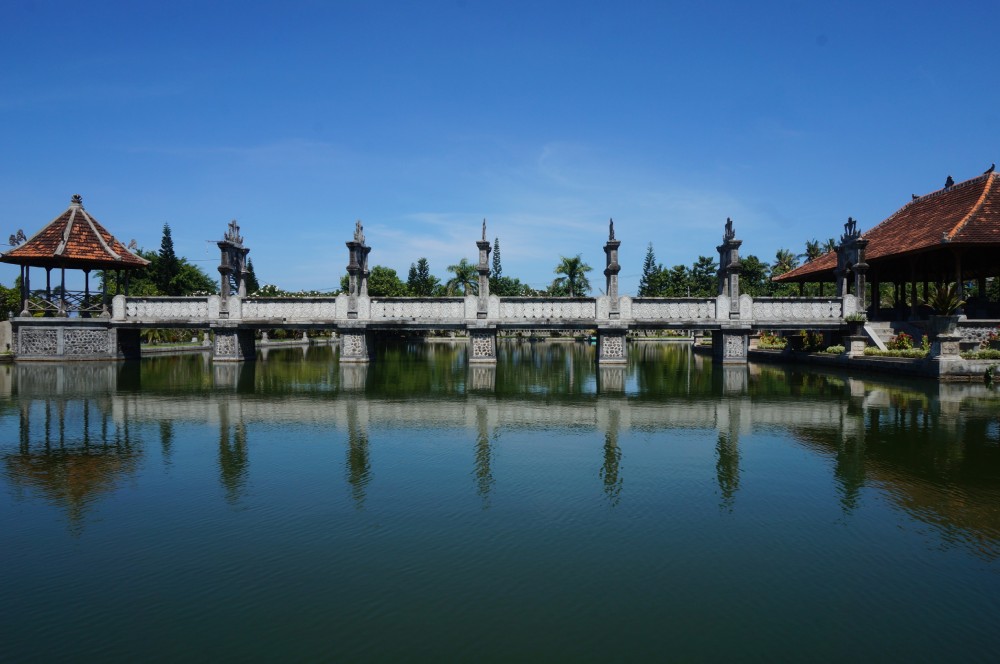
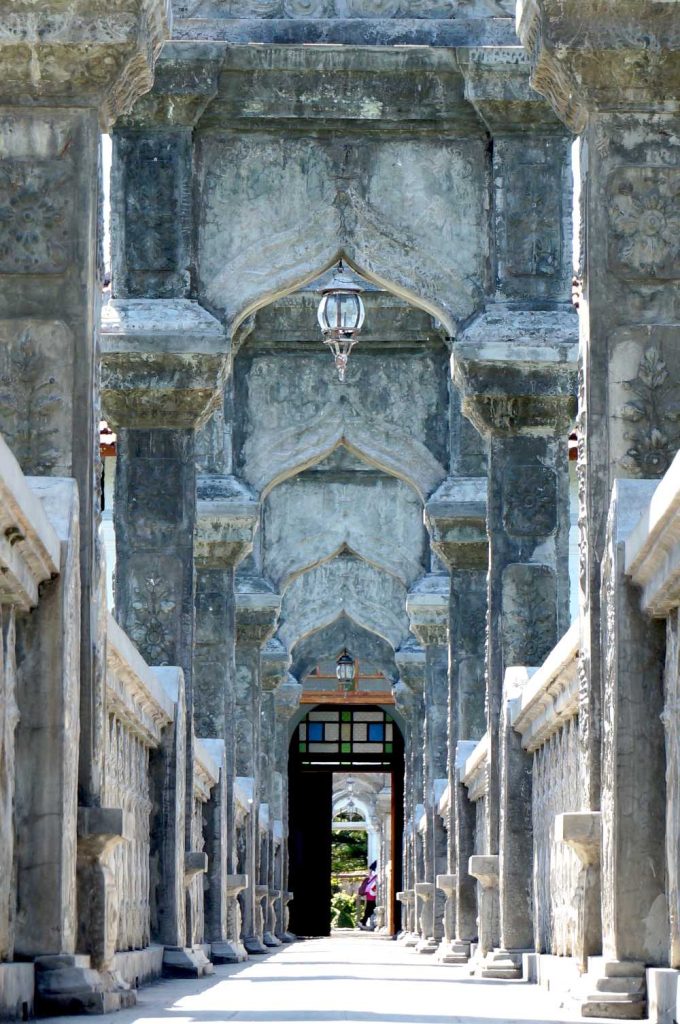
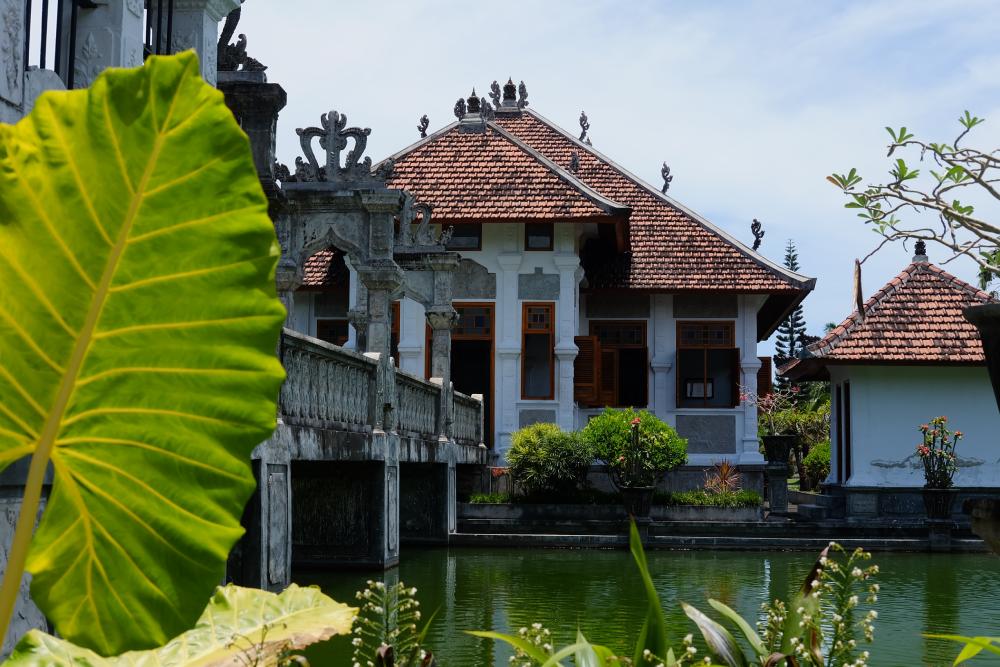
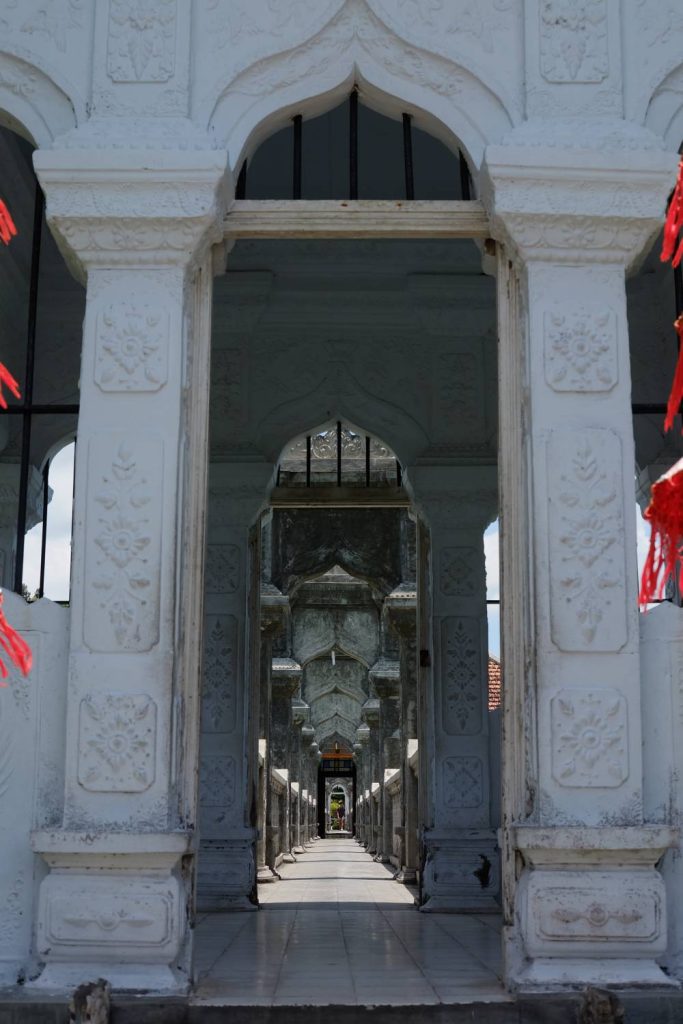
Taman Ujung Sukasada is one of these historical sites. Often referred to as the ‘Water Palace’, it is in some ways a modern puri, or royal palace, built by the last ‘official’ King of Karangasem, I Gusti Bagus Jelantik. Serving under the title of Anak Agung Agung Anglurah Ketut Karangasem, the king reigned from 1908 to 1950, finding himself in the throws of one of the most significant disruptions of Indonesian society. Ruling during the Dutch invasion, Second World War, Japanese occupation and Indonesian independence was certainly a rocky road for nobility, seeing much of their traditional, feudal structures overturned.
However, it is precisely because of this period of history, and all of its cultural changes, this palace is so visually distinct and intriguing, making it worthy of a visit when venturing out east.
Found approximately 5 kilometres away from the Karangasem capital of Amlapura, Taman Ujung presides over one of the region’s verdant, coastal hillsides. Its evocative name translates to ‘Garden at the End’, or ‘Garden at the Edge’. The palace’s construction began in 1909 and was only completed in 1921; it was designed around an existing kolam Dirah (Dirah pool), which was built by the previous king, A. A. Gde Djelantik, used as a ‘purification pool’ for those who were suspected of practising black magic. His successor had more cheerful plans for the land, creating a peaceful destination for the pleasure of his family and a place to impress visiting dignitaries — of which there were many.
The 10-hectare grounds welcome visitors into a wonderland of impeccably manicured gardens, which very recognisably do not present the typical ‘tropical’ landscaping we would expect across Bali. Alongside the vibrant flowers and sprouting palms are the willowy conifers and potted and shaped shrubbery that are more akin to the stereotypical European botanical garden.
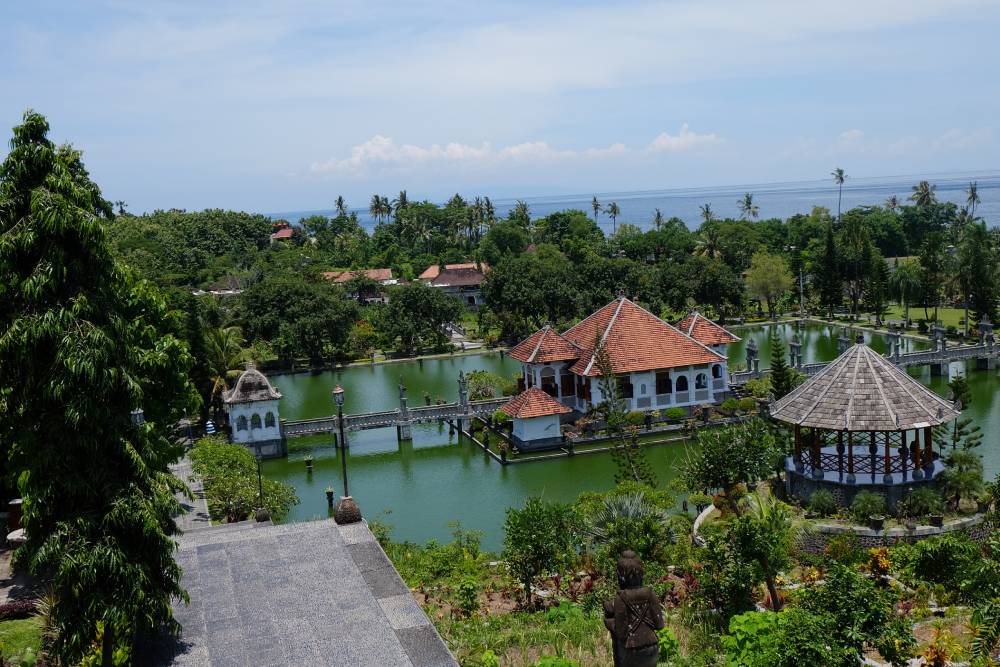
A highlight of the gardens are three large pools, at the centre of which stands the impressive Bale Gili, or ‘Island Bale’, that appears to float majestically atop the vast body of water. The building is connected to the mainland by two long, ornate bridges each with its own pavilion. Like the surrounding gardens, the design of these structures is curious, presenting a fusion of different architectural styles.
At this point in history, the Dutch already had a presence in Bali and the King I Gusti Bagus Jelantik served under them. Thus, there was far more cultural exchange, and one could say that Taman Ujung is a physical manifestation of this exchange. The palace’s design was envisioned not only by the king, considered to be a learned architect, but also by Balinese undagi (traditional architects), a Dutch architect, Van Den Hentz, and a Chinese architect, Loto Ang.
The Bale Gili is a great example of this fusion of styles, whereby the bale is a closed building (Balinese pavilions are normally open) and takes on the distinct Dutch colonial white façade, blended with Bali’s intricate carvings and embellishments like the notable karang bentala crown ornaments that stand on the bridges’ archways and on the roof of buildings. The use of concrete is also a sign of a Western influence, with decorative concrete moulds featuring Balinese motifs showcasing a localised utilisation of what was considered new technologies. This use of concrete can also be seen at the royal family’s main palace, Puri Agung Karangasem.
It is a marrying of the east and west, and an example of Bali adapting to being open to the world. Still, Balinese philosophy runs thick through Taman Ujung, with the main pool symbolic of Ksirarnawa, the milky ocean, and the Bale Gili said to be Mt. Mandhara Giri, both used by the gods to obtain the elixir of life, amerta.
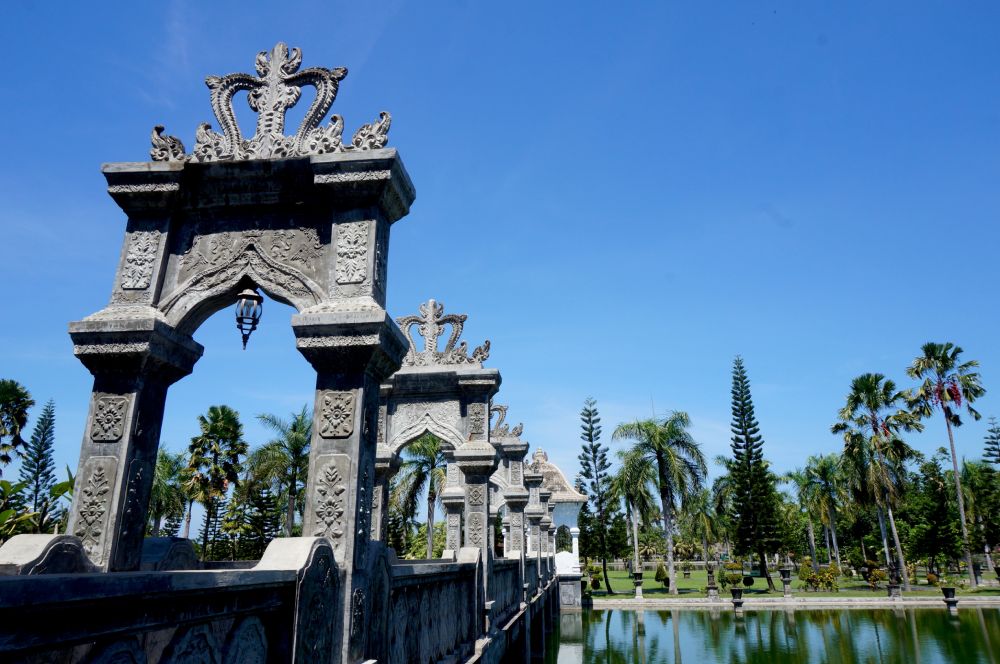
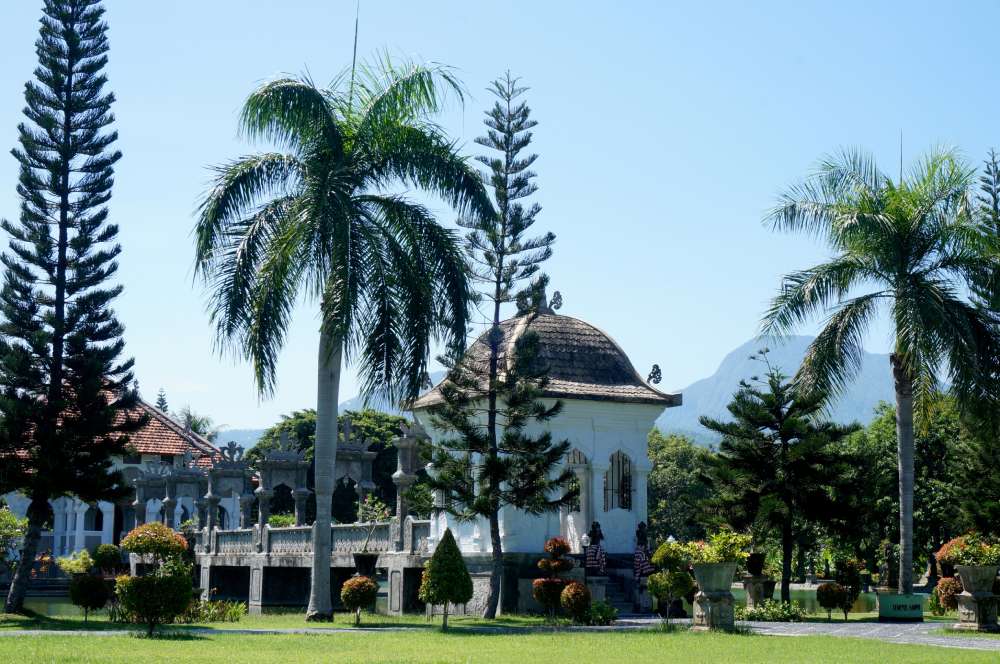
During its heyday, the king welcomed the King of Siam (Thailand), the Governor General of the Netherlands, and the Sultans of both Surakarta (Solo) and Yogyakarta. Such was its reputation that the Dutch gave it the name Waterpaleis (water palace) which has stuck to this day.
Unfortunately, the cataclysmic eruption of Mt.Agung in 1963, as well as subsequent earthquakes in 1976 and 1978 devastated the whimsical water palace, leaving it nearly completely destroyed. It was abandoned for decades before a major restoration and reconstruction project began in 1998, finishing in 2001.
One original building remains, the Bale Kapal. Reached by climbing a majestic flight of stairs on the west side of the palace, the Bale Kapal perches high above the ponds and looks out across the entire gardens to a backdrop of coconut groves, Ujung Beach, and Mt Lempuyang beyond.
Today, the restored Taman Ujung Palace remains a highlight destination in the east, offering a glimpse into Bali’s royal-colonial past through its heritage buildings and verdant grounds. The Bale Gili houses historical photographs and provides more context to the beautiful legacy of the 20th-century king.
Tirta Gangga – The Water of the Ganges
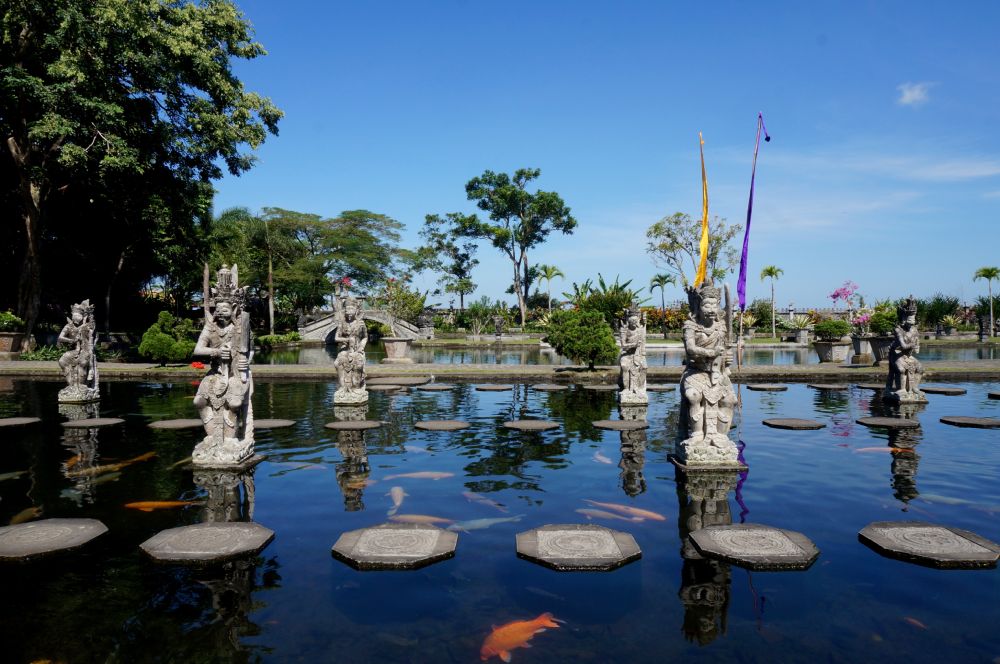
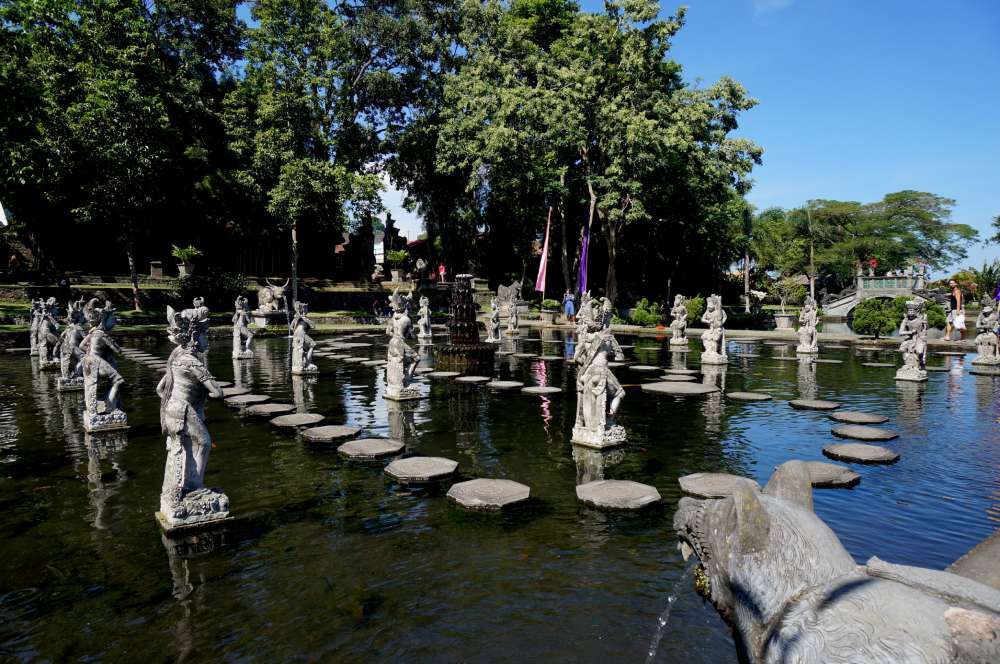
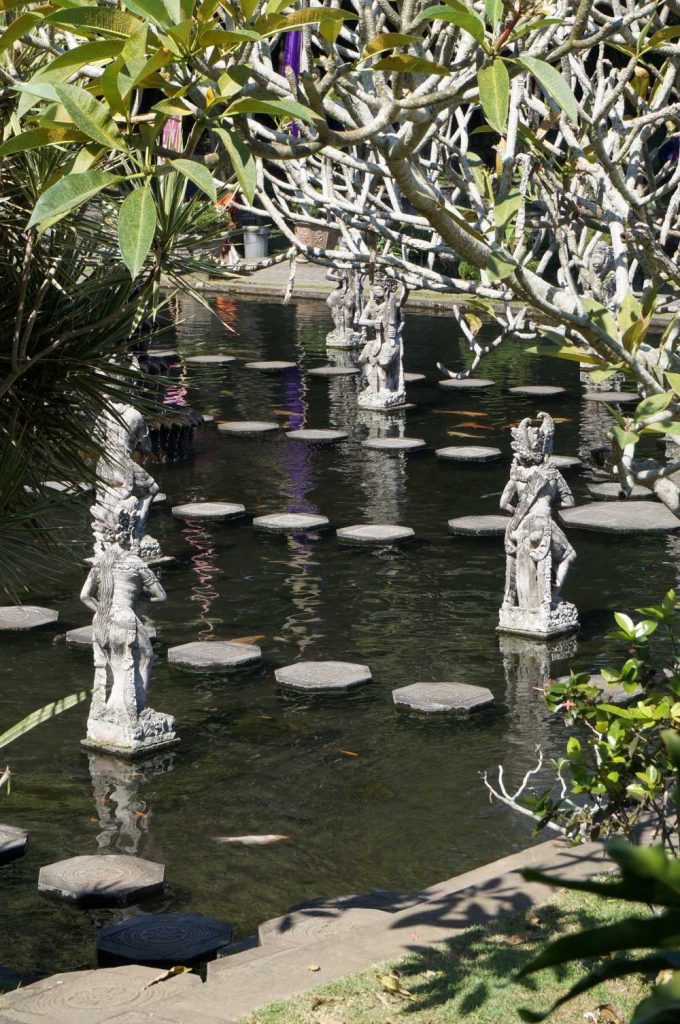
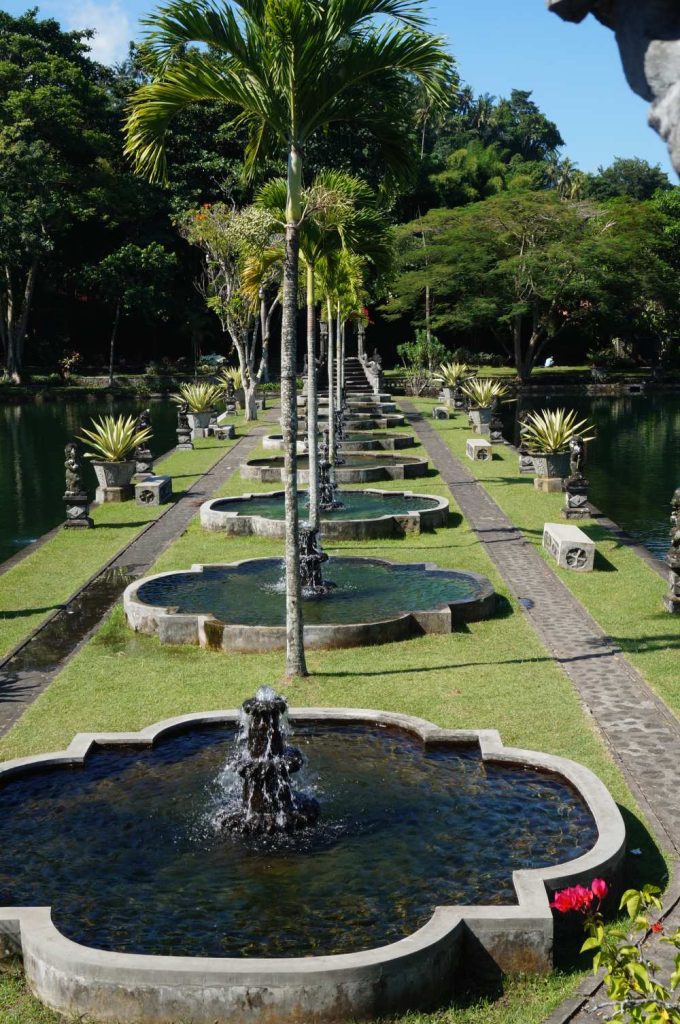
On the borders of Amlapura, Tirta Gangga is one of the most distinct and recognisable places in Bali, a place where history meets leisure, and architecture meets nature. This estate, built in 1946, is the sister site to Taman Ujung, also built by the King of Karangasem.
Stepping into the one-hectare water palace complex, the atmosphere of authentic royal grandeur will instantly become evident for every visitor. Being a posh noble, who was also an advocate of beautiful architecture and an art patron, the king himself was the architect of the water palace who worked in the mud together with his labourers, digging out the pools and ponds. Today, the water palace’s labyrinth of pools and fountains surrounded by a lush garden, stone carvings and statues is one of the most photographed places of interest on the island. The water palace, meaning “Water of the Ganges”, displays a unique blend of Balinese and Chinese architecture as portrayed in the palace’s centrepiece, an eleven-tiered, pagoda-like fountain. It has been rebuilt and restored after the property was almost entirely destroyed by the eruption of Mount Agung in 1963.
Comprised of three separate areas, this royal bathing-cum-relaxing complex now allows every visitor to get a taste of the life of Balinese royals. On the first level of the water palace, the part of the property that is probably the most eye-catching, visitors can find two large fish ponds with dozens of Balinese statues and beautifully positioned stepping stones for everyone to wander through the pools. The second is where two spring water swimming pools are located, where visitors can access the swimming pools and take a dip. On the third level, you can find a restaurant and bungalow units; this area used to be part of the water palace where the king built his country home, affording breathtaking views of the palace’s water features below and the verdant surroundings.
The water of Tirta Gangga has always been regarded as holy and is regularly used for religious temple ceremonies. During important celebration days, Tirta Gangga is the destination of colourful processions with offerings, umbrellas, flags and other tributes. Led by the local temple priests, ceremonies are held in the spring, accompanied by chanting and the music of the ‘Beleganjur’, a gamelan group of small gongs with each musician striking a specific, different note on the musical scale, all blending in harmony.







